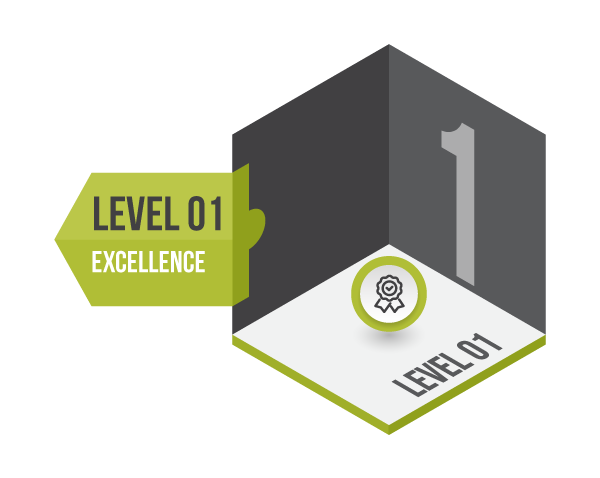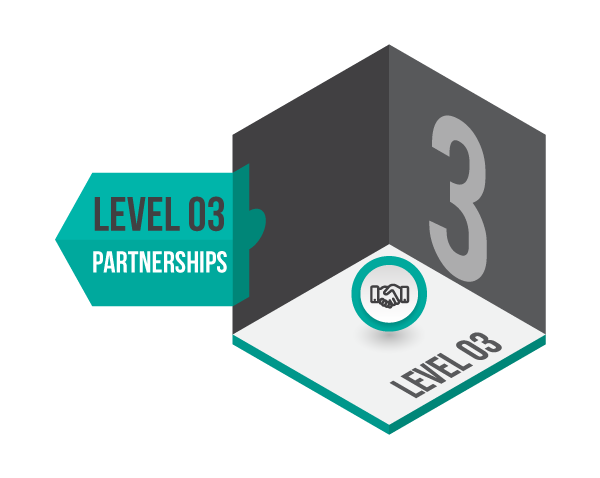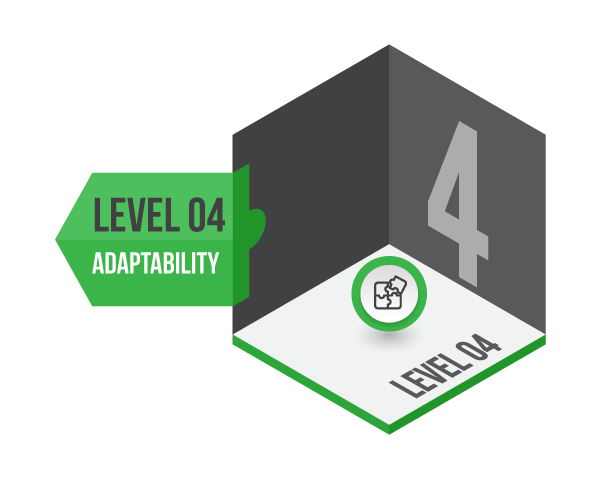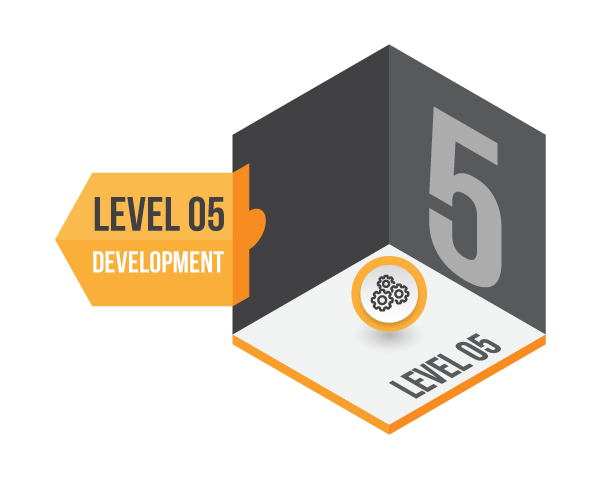Strategic Plan
View Strategic Plan Brochure
Vision Statement: Where Hope Meets Opportunity
Lamar State College Orange will prepare individuals for a changing world by creating a place where hope meets opportunity. Our students will arrive with the hope of a productive future and leave with the knowledge and opportunities for success that a Lamar State College Orange education provides.
Mission Statement: Transforming Lives
Lamar State College Orange transforms lives and communities through the continual pursuit of academic, professional, and personal excellence. We provide new and unique opportunities for growth and success. We are the bridge connecting those we serve to a bright, Orange future.
Core Values
- Quality: Providing access to educational excellence
- Growth: Building a shared vision of opportunity and advancement
- Service: Addressing and serving the needs of the community and beyond
- Innovation: Pursuing and creating an array of unique educational opportunities
- Success: Achieving personal and professional goals
LSCO's 2025-2029 Strategic Plan

GOAL 1 - EXCELLENCE:
Lamar State College Orange will provide access to programs and services that meet the highest standards of excellence (derived from core value of Quality)
- LSCO will provide access to professional development activities.
- Conduct institutional and locally developed research to determine student needs and challenges and use results to improve access to services.
- Conduct surveys and other evaluations to determine the needs of our campus and communities we serve.
- Maintain accreditation and compliance in areas regulated or monitored by outside agencies.
- Attract, hire, retain, and invest in excellent faculty, staff, and administrators.
- Ensure the safety and security of our faculty, staff, students, and community.
- All LSCO faculty and staff will engage in ongoing professional development in their area of expertise.
- LSCO will conduct annual surveys of student satisfaction, and departments within student services will submit biennial reports. In addition, the college will administer the Community College Survey of Student Engagement (CCSSE) biennially.
- All LSCO programs accredited by external agencies will meet or exceed the standard(s) of accreditation.
- The General Education Assessment Committee (GEAC) will create and foster the growth of a campus-wide culture of assessment, leading to the constant improvement in quality of curriculum and teaching.
- Responsible departments will annually review policies, procedures, and practices to assure efficient and effective service.
- All LSCO faculty will undergo annual evaluation to include periodic peer review, student evaluation, and supervisory observation of teaching, both in face-to-face and online courses.
- Safety, Security, & Risk Management committee will meet regularly to ensure the safety of the campus community.
- Eight or more hours of professional development per staff and faculty member are expected each academic year.
- Information Services will annually provide required training sessions related to LSCO applications and/or State of Texas mandates.
- Annual institution-wide satisfaction survey to drive continual quality improvement.
- Distance Education Committee (DEC) will conduct online course reviews periodically.
- General Education Assessment Committee (GEAC) will conduct annual review of general and specific learning outcomes for six competencies in general education courses as required by THECB.
- Efficiency review of policies, procedures, and practices annually to ensure compliance.
- Annual evaluation of faculty and staff to include supervisor feedback.
- Develop and annually evaluate a campus survey to determine the extent to which the campus community feels safe.
GOAL 2 - OPPORTUNITY:
Lamar State College Orange will engage our students and communities to build and foster a shared vision of opportunity and advancement (derived from core value of Growth)
- LSCO will monitor emerging trends and collaborate with business and industry to identify workforce training needs and curricular guidelines to create or redesign course offerings and programs.
- Grow the community’s college-bound culture and increase the college’s enrollment by communicating with potential students regarding opportunities for employment or advancement that college can open to graduates.
- Collaborate with high school partners to create pathways that bridge a seamless transition to LSCO.
- Collaborate with four-year institutions to create pathways that bridge a seamless transition from LSCO.
- Facilitate efficient admission, advising, and registration services at LSCO.
- LSCO will engage in a data-informed, data-driven process to:
- identify new or expanding job and career opportunities,
- define the knowledge, skills and abilities a candidate for employment in the field should possess, and
- partner with local business and industry to develop programs and facilities to allow LSCO graduates to successfully compete for employment or career advancement.
- LSCO will engage in outreach efforts to inform our area’s diverse population of the advantages and opportunities provided by a college education.
- LSCO will work with high school partners to ensure college readiness to grow and strengthen the community’s college-bound culture.
- LSCO will regularly engage in collaborative processes to conduct ongoing course and program development.
- LSCO faculty and staff will actively participate in academic advising and recruiting each semester to promote increasing student enrollment and retention.
- Annual meeting with university, business, and industry leaders.
- A minimum of one public service outreach initiative per semester promoting the value of education to the community’s growth and prosperity.
- Enrollment: total headcount (update):
- 3,245 Fall 2025
- 3,342 Fall 2026
- 3,443 Fall 2027
- 3,546 Fall 2028
- 3,652 Fall 2029
- New programs:
- Small Engine Repair
- Hospitality and Event Planning
- Electrician
- Plumbing
- Health Information / Medical Records
- Emergency and Disaster Management
- Cardiovascular Technology
- A minimum of one new bridge / curriculum alignment initiative per academic year.
- Faculty and staff will participate in career fairs, orientations, student activity events, and other functions where potential students can be recruited.
GOAL 3 - PARTNERSHIPS:
Lamar State College Orange will continually strive to meet the growing and changing needs of our students, faculty, staff, businesses, industries, and high schools (derived from core value of Service).
- Engage civic, workforce, and school partners to determine the needs of the community and develop plans in response.
- Host, support, and participate in local nonprofit and community initiatives and projects.
- Continually improve student and interdepartmental support services
- Maintain transparency and facilitate public access to information pertaining to college policies, programs, and practices.
- LSCO will collaborate with civic, business, industry, and secondary school leadership to develop and revise program and service initiatives.
- LSCO will host a minimum of two community service or outreach events annually and encourage LSCO faculty and staff to participate.
- LSCO professional staff will continually identify areas where service to students and colleagues can be improved.
- Information Technology and Finance and Operations will provide technical services in the development and use of computer applications and budget and finance management strategies and practices.
- LSCO will ensure policies and best practices for the archiving and accessibility of college publications.
- Biannual meetings with business and industry leaders.
- Quarterly meetings with K-12 partners.
- Dual credit enrollment:
- 1,622 Fall 2025
- 1,671 Fall 2026
- 1,721 Fall 2027
- 1,773 Fall 2028
- 1,826 Fall 2029
- After one year of benchmarking, departmental student satisfaction survey and institutional climate survey results will show continual improvement each year until 2029.
- Facilitate training for all end users on budget, requisitions, travel policies, and Human Resource-related documents.
GOAL 4 - ADAPTABILITY:
Lamar State College Orange will create and continually adapt educational opportunities to help students and communities respond to the challenges posed by a changing world (derived from core value of Innovation).
- Adapt courses and programs to use Open Educational Resources or texts and instructional materials created by LSCO faculty.
- Networking with other institutions and vendors to learn about new technology and implement best practices. Use a Gator Growth break-out session for technology demonstration.
- Use results of ongoing research to identify emerging careers and fields of study for designing new courses and programs.
- Periodically redesign courses and realign programs in fields of study where rapid advance is occurring.
- Encourage faculty to systematically incorporate emerging research, facilitated by library services, into course and program development to assure that curricula are current, and that faculty are adhering to best practices in teaching and student engagement.
- LSCO will increase the use of Open Educational Resources or instructor-developed texts and course materials.
- LSCO will continue to research and implement available technology to increase efficiency of operational processes.
- LSCO will regularly develop new academic, technical, and workforce education programs in emerging fields of study.
- LSCO will regularly develop new affordable and accessible continuing education programs designed to promote lifetime learning and enrichment.
- All LSCO faculty will engage in ongoing research and professional development in pedagogy and field of study, in order to ensure innovation and relevance.
- Innovative course design leading to an increase in 2% of courses with required materials using Open Educational Resources (OERs) per academic year.
- Revise or automate at least one manual process per academic year, in response to satisfaction survey and efficiency review data.
- Develop one new academic or technical program or pathway per year in response to market study data indicating need or emerging opportunity.
- Develop one new workforce or continuing education (non-credit) opportunity or program to offer each year.
- 100% of faculty will report their professional development in their annual evaluation.
GOAL 5 - DEVELOPMENT:
Lamar State College Orange will guide and support our students, faculty, staff, and community members to achieving their educational and professional goals (derived from core value of Success).
- Identify and remove barriers or obstacles to completion, graduation, and/or transfer.
- LSCO will provide support for faculty and staff to increase their skills and knowledge in order to create advancement opportunities.
- LSCO will be responsive to the local needs of our community members and industry partners.
- LSCO will work to identify and remove barriers by creating new guided pathways, implementing articulation agreements, and hosting transfer school recruiting efforts.
- LSCO will work to identify and remove financial impediments to student academic success and lower student debt at graduation by designing, implementing, and/or expanding scholarship and other financial assistance.
- LSCO will hire and train a highly qualified, diverse faculty and staff as well as promote deserving employees into desirable positions.
- LSCO will join relevant professional organizations in order to be responsive to community and industry needs.
- LSCO will create or redesign leading edge facilities promoting and fostering achievement and success.
- Academic Success Targest
- Completion: degrees and certificates awarded annually (all programs)
- 2025: 649
- 2026: 668
- 2027: 689
- 2028: 709
- 2029: 730
- 3-year graduation rates:
- 2025: 26.0%
- 2026: 26.8%
- 2027: 27.6%
- 2028: 28.4%
- 2029: 29.2%
- Persistence rates:
- 2025: 54.0%
- 2026: 55.6%
- 2027: 57.3%
- 2028: 59.0%
- 2029: 60.7%
- Completion: degrees and certificates awarded annually (all programs)
- Financial Aid Targets:
- Up to 10 Ambassador Scholarships
- Participate in THECB Statewide Course Sharing Program opportunities.
- Hiring targets in different service, support, and instructional areas to support service,
quality, and growth initiatives:
- Hire additional faculty members in academic fields as needed.
- Hire additional faculty members in technical fields as needed.
- Facilities:
- Fall 2024: New Academic Building
- Fall 2024: Student Success Center
- Logistics Office / Classroom Building
- Additional Nursing/Classroom Building
- Career & Technical Center Building